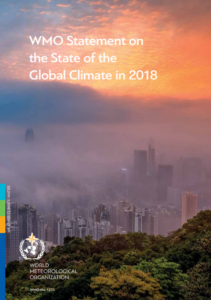World Meteorological Organisation (WMO) published a report focusing on the physical signs and socio-economic impacts of climate change that are accelerating as record greenhouse gas concentrations drive global temperatures towards increasingly dangerous levels.
https://www.youtube.com/watch?v=I8p1DgwbxTE
Specifically, the ‘WMO Statement on the State of the Global Climate in 2018’ is its 25th anniversary edition and comments the record sea level rise and the exceptionally high land and ocean temperatures in the last four years.
As WMO Secretary-General Petteri Taalas highlights:
Since the Statement was first published, climate science has achieved an unprecedented degree of robustness, providing authoritative evidence of global temperature increase and associated features such as accelerating sea level rise, shrinking sea ice, glacier retreat and extreme events such as heat waves.
Unfortunately, the key climate change factors worsen, as carbon dioxide levels which were at 357.0 parts per million when the statement was first published in 1994, keep increasing to 405.5 parts per million in 2017. For 2018 and 2019, greenhouse gas concentrations are expected to increase further.
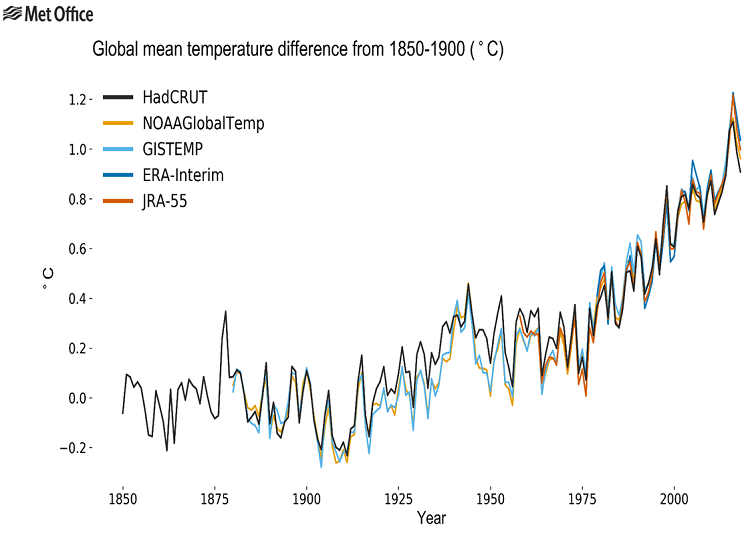
The WMO climate statement consists of:
- Input from national meteorological and hydrological services
- An extensive community of scientific experts and United Nations agencies.
- Details of climate related risks and impacts on human health and welfare, migration and displacement, food security, the environment and ocean and land-based ecosystems.
- Catalogs extreme weather around the world.
Moreover, Taalas commented on the extreme weather conditions that affect the world, focusing on the recent cyclone Idai that resulted to devastating floods and tragic loss of life in Mozambique, Zimbabwe and Malawi. It may turn out to be one of the deadliest weather-related disasters to hit the southern hemisphere.
Additionally, from the early days of 2019, the climate has also experienced warm record daily winter temperatures in Europe, unusual cold in North America and searing heatwaves in Australia. Arctic and Antarctic ice extent is again well below average.
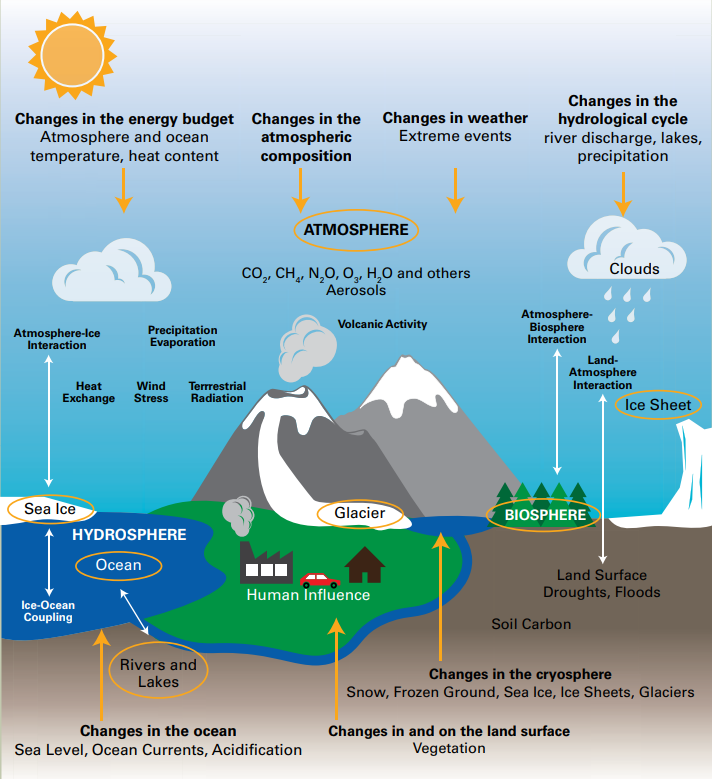
Climate indicators
Ocean heat: 2018 reached new records for ocean heat content in the upper 700 meters (data record started in from 1955) and upper 2,000 meters (data record started in 2005), topping the previous record set in 2017. More than 90% of the energy trapped by GHG goes into the oceans and ocean heat content provides a direct measure of this energy accumulation in the upper layers of the ocean.
Sea level: Sea level continues to rapidly increasing. Global Mean Sea Level (GMSL) for 2018 was around 3.7 millimeters higher than in 2017 and the highest on record. Over the period January 1993 to December 2018, the average rate of rise is 3.15 ± 0.3 mm per year while the estimated acceleration is 0.1 mm/yr2.
Increasing ice mass loss from the ice sheets is the main cause of the GMSL acceleration as revealed by satellite altimetry, according to the World Climate Research Programme global sea level budget group, 2018.
Ocean acidification: In the past decade, the oceans absorbed around 30% of anthropogenic CO2 emissions. Absorbed CO2 reacts with seawater and changes the pH of the ocean. This process is known as ocean acidification, which can affect the ability of marine organisms such as molluscs and reef-building corals, to build and maintain shells and skeletal material.
Observations in the open-ocean over the last 30 years have shown a clear trend of decreasing pH. In line with previous reports and projections, ocean acidification is ongoing and the global pH levels continue to decrease, according to UNESCO-IOC.
Sea ice: Arctic sea-ice extent was well below average throughout 2018 and was at record-low levels for the first two months of the year. The annual maximum occurred in mid-March and was the third lowest March extent in the 1979-2018 satellite record. The September monthly sea ice extent was the sixth smallest September extent on record. The 12 smallest September extents have all occurred since 2007. At the end of 2018, the daily ice extent was near record low levels.
In addition, U.N. Secretary General António Guterres reported
The data released in this report give cause for great concern. The past four years were the warmest on record, with the global average surface temperature in 2018 approximately 1°C above the pre-industrial baseline.
He continued that the data confirm the need for climate action.
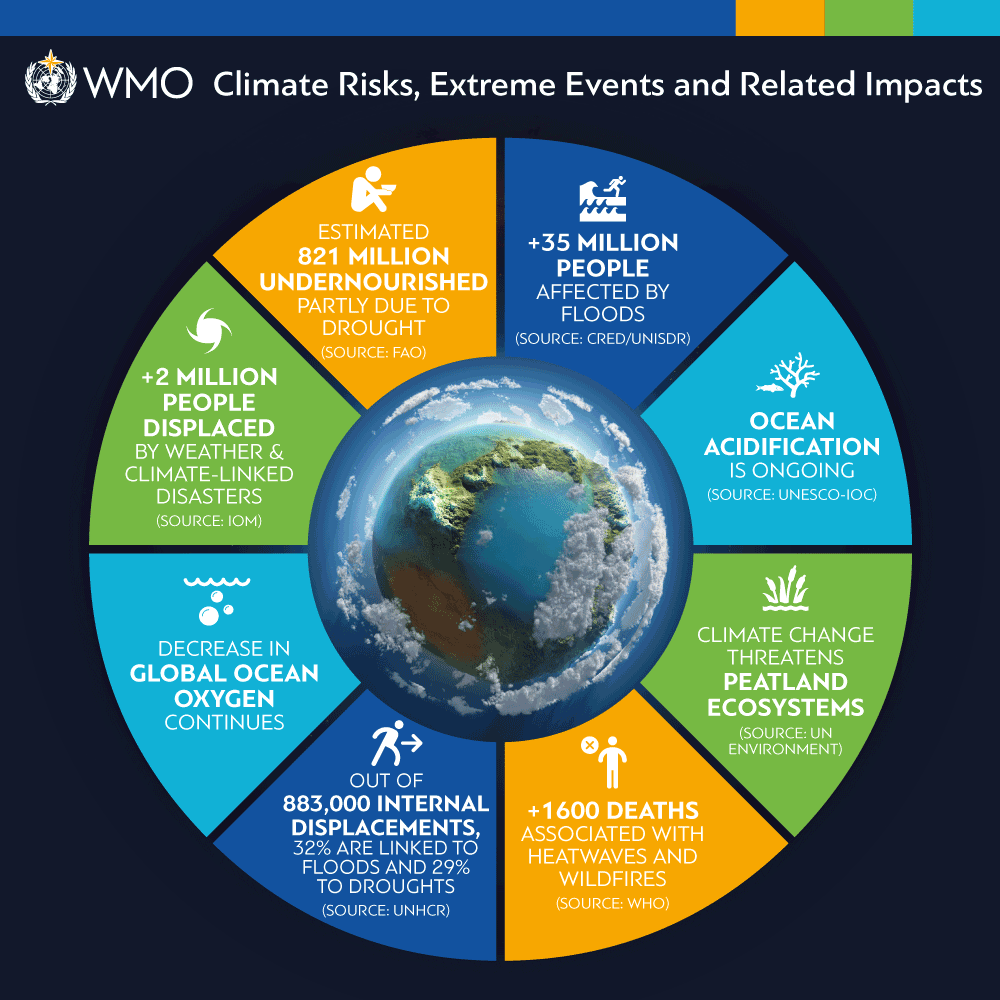
Climate impacts arising from the climate change
Hazards: In 2018, most of the natural hazards which affected nearly 62 million people were associated with extreme weather and climate events. Floods continued to affect the largest number of people, more than 35 million, according to an analysis of 281 events recorded by the Centre for Research on the Epidemiology of Disasters (CRED) and the U.N. International Strategy for Disaster Risk Reduction.
More than 1,600 death were associated with intense heat waves and wildfires in Europe, Japan and the U.S., where they were associated with record economic damages of nearly $24 billion in U.S. The Indian state of Kerala suffered the heaviest rainfall and worst flooding in nearly a century.
Food security: New evidence shows a continuing rise in world hunger after a prolonged decline, according to data compiled by U.N. agencies including the Food and Agriculture Organization and World Food Programme.
n 2017, the number of undernourished people was estimated to have increased to 821 million, partly due to severe droughts associated with the strong El Niño of 2015–2016.
Displacement: Out of the 17.7 million Internally Displaced Persons (IDPs) tracked by the International Organization for Migration, over two million people were displaced due to disasters linked to weather and climate events as of September 2018. Drought, floods and storms, including hurricanes and cyclones, are the events that have led to the most disaster-induced displacement in 2018. In all cases, the displaced populations have protection needs and vulnerabilities.
Heat, Air Quality and Health: There are many interconnections between climate and air quality, which are being exacerbated by climate change. Between 2000 and 2016, the number of people exposed to heatwaves was estimated to have increased by around 125 million persons, as the average length of individual heatwaves was 0.37 days longer, compared to the period between 1986 and 2008, according to the World Health Organization.
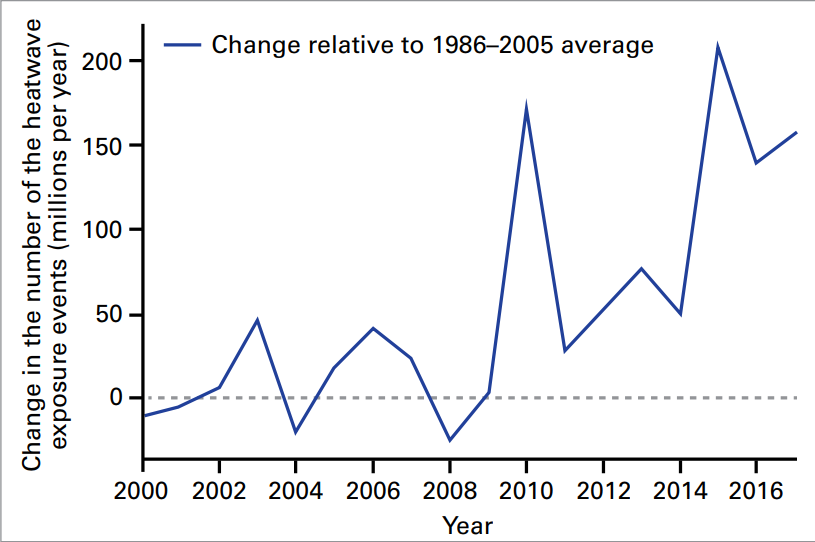
Moreover, the report presents that the environmental impacts also include: coral bleaching and reduced levels of oxygen in the oceans.
Amongst them is also ‘Blue Carbon’ associated with coastal ecosystems such as mangroves, seagrasses and salt marshes; and ecosystems across a range of landscapes.
The Antarctic sea ice extent reached its annual maximum in late-September and early-October. After the maximum extent in early spring, Antarctic sea ice declined at a rapid rate with the monthly extents ranking among the five smallest for each month through the end of 2018.
Concluding, the report highlights that 2018 was the fourth warmest year on record, whereas 2015–2018 were the four warmest years on record as the long-term warming trend continues.
For more information, click the PDF herebelow



































